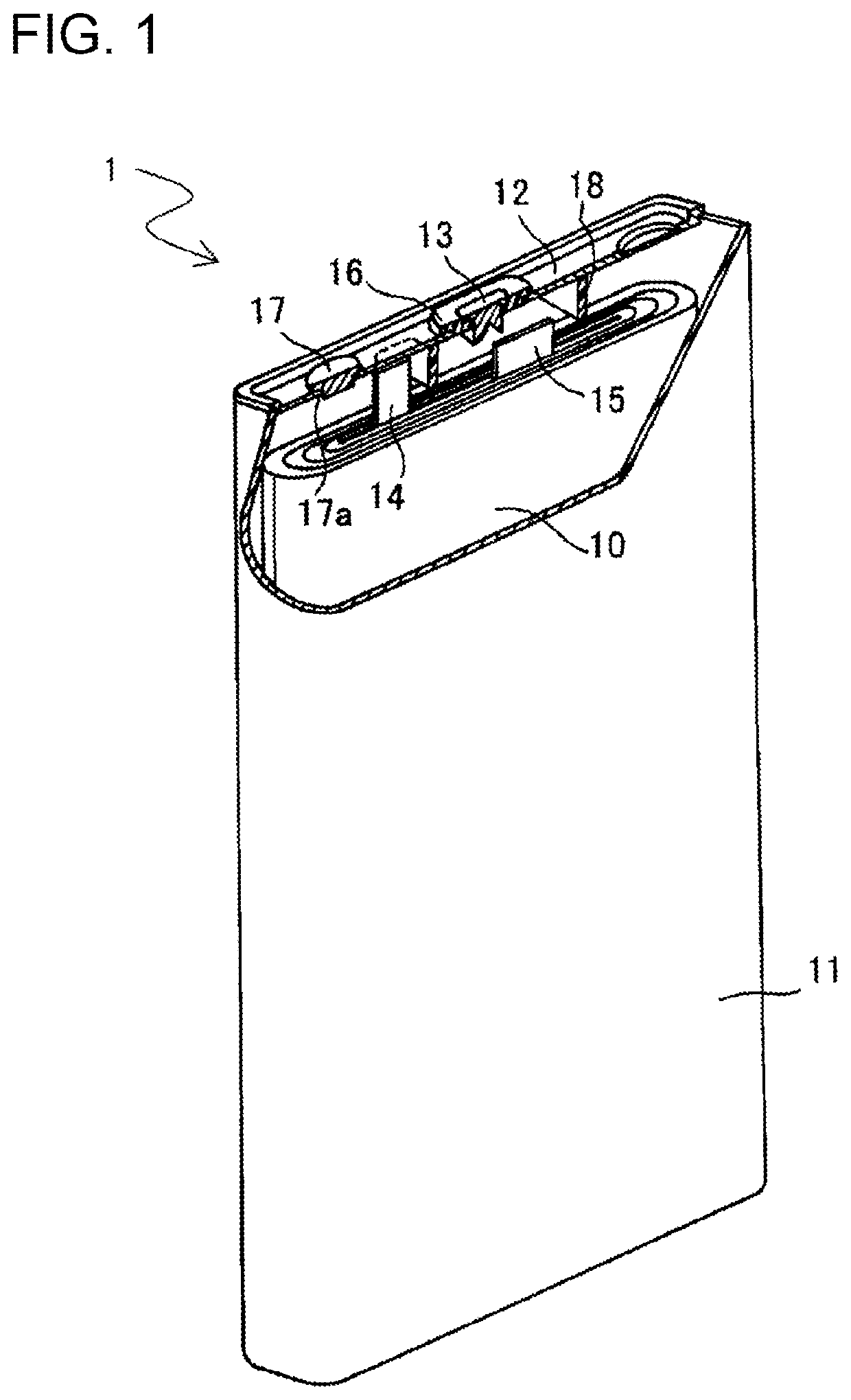Non-aqueous electrolyte secondary battery
a non-aqueous electrolyte and secondary battery technology, applied in the direction of positive electrodes, cell components, electrochemical generators, etc., can solve the problems of improving both cycle characteristics and cycle characteristics at high temperatures, and achieve excellent cycle characteristics
- Summary
- Abstract
- Description
- Claims
- Application Information
AI Technical Summary
Benefits of technology
Problems solved by technology
Method used
Image
Examples
example 1
[Preparation of Negative Electrode].
[0060]Graphite as a negative electrode active material, sodium carboxy methylcellulose (CMC-Na), styrene-butadiene rubber (SBR), and water were mixed at a predetermined mass ratio to prepare a negative electrode slurry. Next, a negative electrode slurry was applied to each surface of a copper foil as a negative electrode current collector, and the coating film was dried, and then rolled to form a negative electrode mixture layer on both surfaces of the copper foil.
[Preparation of Positive Electrode].
[0061]Lithium nickel composite oxide (LiNi0.91Co0.06Al0.3O2) as a positive electrode active material, acetylene black, polyvinylidene fluoride, and N-methyl-2-pyrrolidone (NMP) were mixed at a predetermined mass ratio to prepare a positive electrode slurry. Next, a positive electrode slurry was applied to each surface of an aluminum foil as a positive electrode current collector, and the coating film was dried, and then rolled to form a positive electr...
examples 2
[0064]A portion of LiPF6 used in Example 1 was replaced with LFSI to prepare a non-aqueous liquid electrolyte. Specifically, the concentration of LiPF6 in the non-aqueous liquid electrolyte was set to 1.15 mol / L, and the concentration of LFSI was set to 0.2 mol / L. Except for the above, a non-aqueous electrolyte secondary battery was manufactured in the same manner as in Example 1 to obtain a battery A2.
PUM
 Login to View More
Login to View More Abstract
Description
Claims
Application Information
 Login to View More
Login to View More - R&D
- Intellectual Property
- Life Sciences
- Materials
- Tech Scout
- Unparalleled Data Quality
- Higher Quality Content
- 60% Fewer Hallucinations
Browse by: Latest US Patents, China's latest patents, Technical Efficacy Thesaurus, Application Domain, Technology Topic, Popular Technical Reports.
© 2025 PatSnap. All rights reserved.Legal|Privacy policy|Modern Slavery Act Transparency Statement|Sitemap|About US| Contact US: help@patsnap.com

